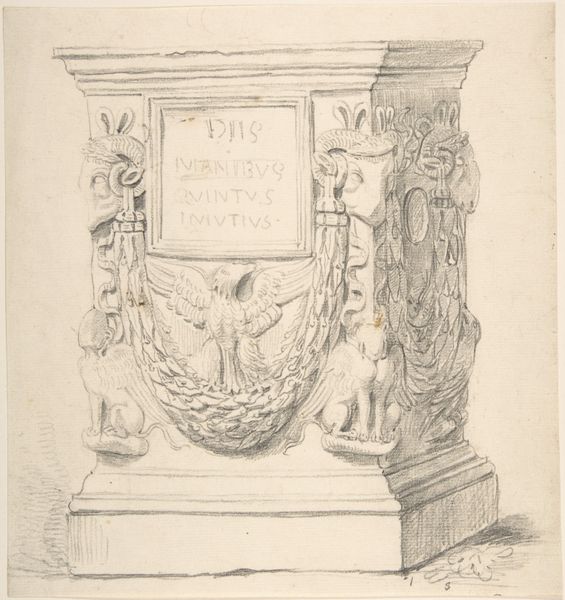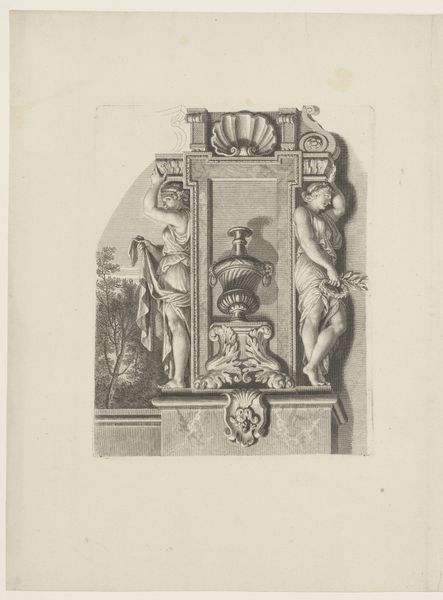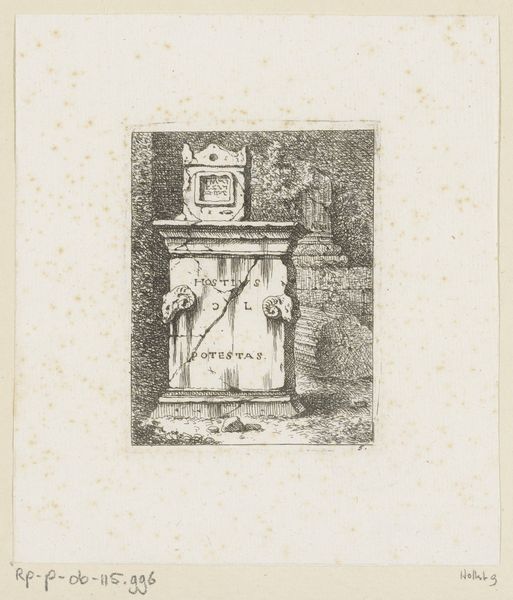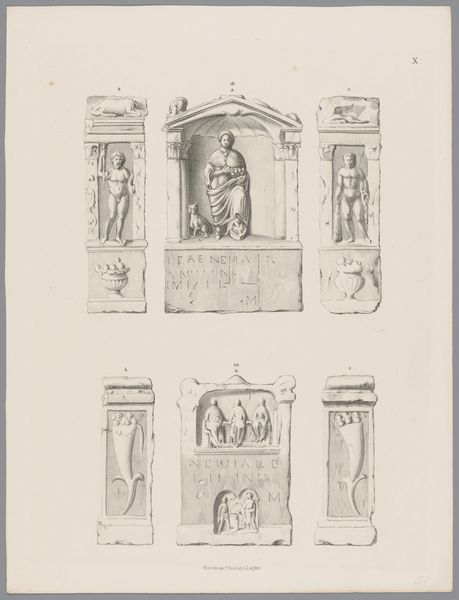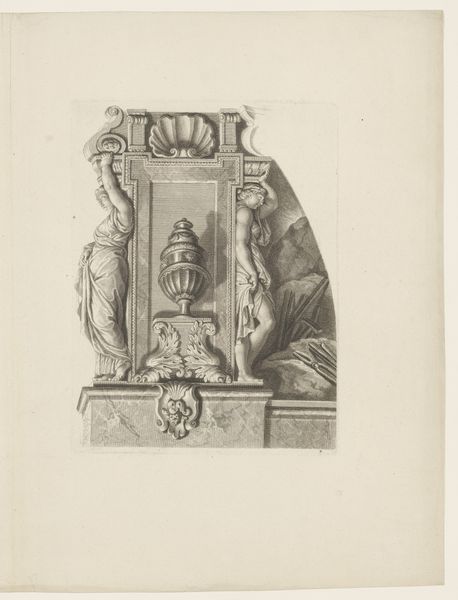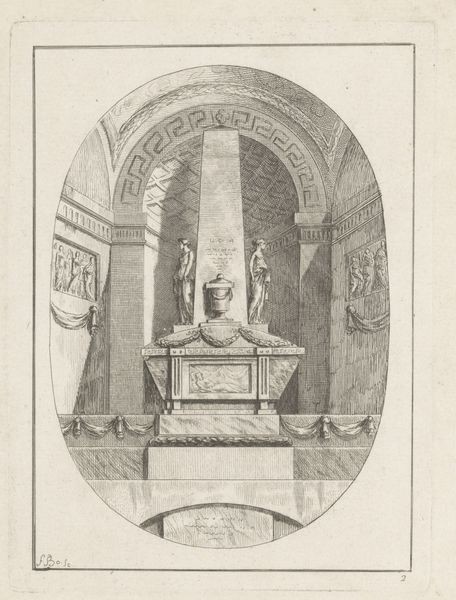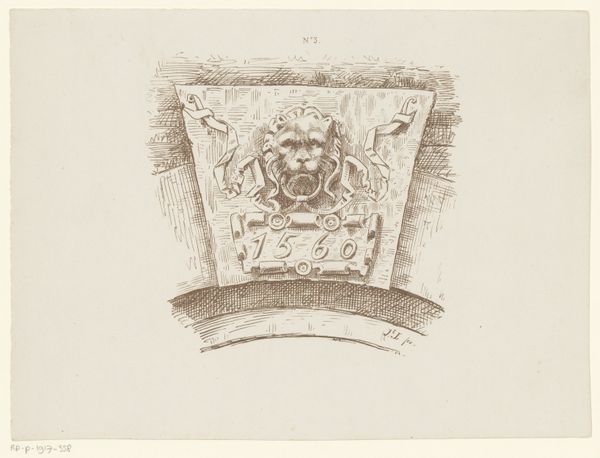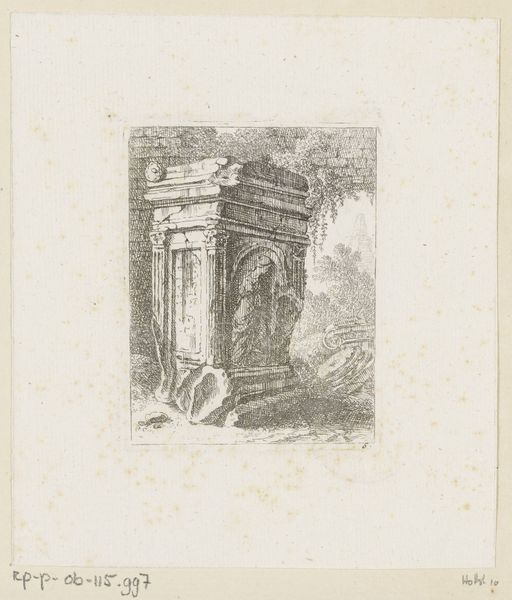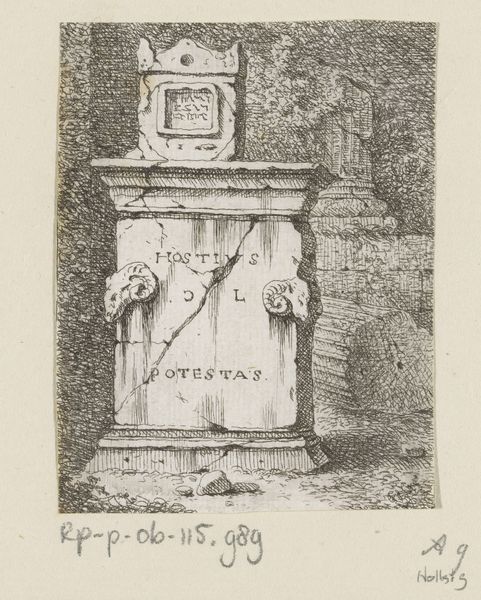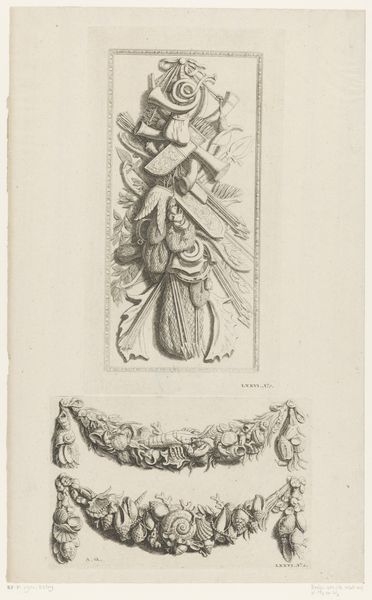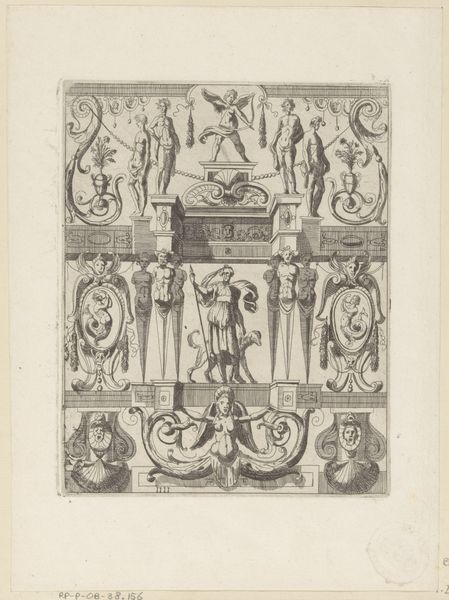
drawing, ink, pen
#
drawing
#
medieval
#
pen sketch
#
old engraving style
#
figuration
#
ink
#
ink drawing experimentation
#
pen-ink sketch
#
pen work
#
pen
Dimensions: height 275 mm, width 205 mm
Copyright: Rijks Museum: Open Domain
Art Historian: Here we have a pen and ink drawing by Jac van Looij, titled "Sluitsteen met heilige Ursula Begijnhof in Amsterdam." It’s estimated to have been made between 1877 and 1894. Art Historian: It has such a wonderfully reverential mood. The crisp lines of the pen create a quiet dignity. It feels as if you’re glimpsing a hidden sacred space. Art Historian: Indeed. The subject is a keystone depicting Saint Ursula, which would have been located at the Begijnhof in Amsterdam. This religious community and its buildings have a fascinating social history. Art Historian: Ursula herself is a powerful symbol of faith and martyrdom, usually shown with attendant virgins, as here. What strikes me is the angel face carved underneath - juxtaposed with her calm solemnity. Art Historian: Yes, it anchors Ursula both physically and spiritually to the architecture around her. Images like these reinforced the church's role, serving as public reminders of morality and divine power within the urban fabric. Art Historian: Look closely at the very top and you can read ‘Anno 1574’, the year in which it was made and installed in Amsterdam. Van Looij seems captivated with an aura of antiquity, an earlier spiritualism from a rapidly changing city. Art Historian: That date is so important, isn't it? Considering that the work on display was executed two centuries later. Think of how this piece acts a a statement or perspective on its society from this temporal remove. Art Historian: Absolutely! There's a yearning evident here. Van Looij has captured Ursula as an icon - someone representing strength amid external and internal trials that so many understand intimately even today. Art Historian: So, what Van Looij gives us, then, is both a historical document and an artful interpretation that allows the public reflection on a sacred society long diminished by his time. Art Historian: Beautifully stated. These kinds of quiet renderings act as portals, don’t they, connecting us across centuries, offering solace through shared stories told in line and shadow.
Comments
No comments
Be the first to comment and join the conversation on the ultimate creative platform.
